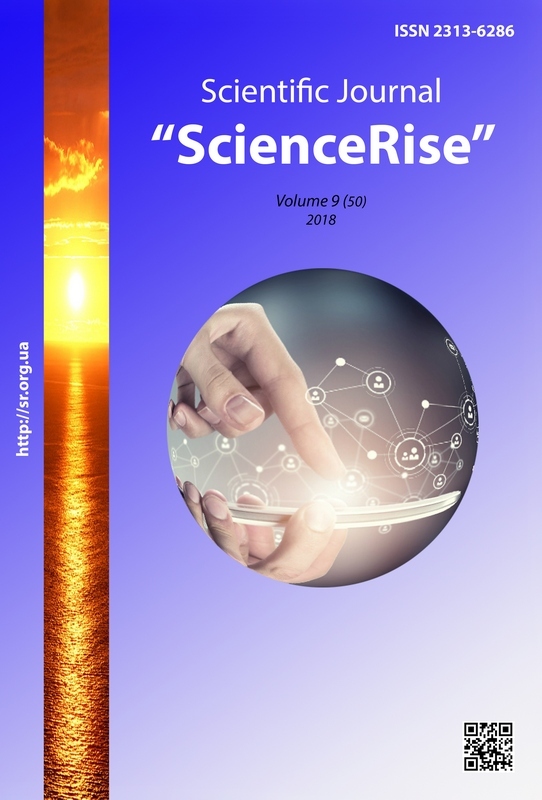Energy modernization of residential houses as a challenge of modern
DOI:
https://doi.org/10.15587/2313-8416.2018.153368Keywords:
energy saving, energy-efficient house, thermal capacity, energy efficiency, passive house, energy consumption criterion, energy modernizationAbstract
The work is devoted to studying the need for thermo-modernization and improving the energy efficiency of the housing stock of Ukraine. The statistics of energy consumption by buildings of various types is analyzed. Thermal modernization measures necessary to reduce the cost of heat consumption are described. The economic feasibility of the reconstruction of certain types of residential buildings is determined, taking into account their energy efficiency. The main architectural planning and design techniques to improve energy efficiency on the example of building in the central part of the Kharkiv are implemented
References
Derzhavna sluzhba statystyky Ukrainy. Available at: http://ukrstat.gov.ua
Barannik V. O. (2016). Enerhoefektyvnist Ukrainy – chy dosiazhni postavleni stratehichni tsili? Stalyi rozvytok terytoriy: problemy ta shliakhy vyrishennia: materialy II mizhnar. nauk.-prakt. konf. Dnipro, 4–9.
Termomodernizatsiya zhytlovoho fondu: orhanizatsiynyi, yurydychnyi, sotsialnyi, finansovyi i tekhnichnyi aspekty (2014). Lviv, 240.
Soventnikov, D. O. (2014). Construction of building in accordance with passive house standards. Construction of Unique Buildings and Structures, 9, 11–25.
Korniyenko, S. V. (2013). Experience of design and construction of energy effective buildings in Volgograd. Construction of Unique Buildings and Structures, 9, 21–33.
Shoyhet, B. M. (2007). Koncepciya energoeffektivnogo zdaniya. Evropeyskiy opyt. Energosberezhenie, 7, 62–65.
Tabunshchikov, Yu. A., Naumov, A. L. (2012). Energy efficiency in construction. Harmonization of the national legislative framework. AVOK: Ventilyaciya, otoplenie, kondicionirovanie vozduha, teplosnabzhenie i stroitel'naya teplofizika, 6 (6), 4–9.
Savin, V. K., Savina, N. V. (2013). Arhitektura i energoeffektivnost' zdaniy. Gradostroitel'stvo, 1, 82–84.
Voronin, A. V. (2007). Dosvid krain Yevrosoiuzu v haluzi tekhnichnoho normuvannia teplovoho zakhystubudivel i sporud. Tekhnolohiyi budivnytstva, 4, 75.
Morozova, T. G., Pobedina, M. P., Polyak, G. B. et. al.; Morozovoy, T. G. (Ed.) (2006). Regional'naya ekonomika: uchebnik dlya vuzov. Moscow: YUNITI, 472.
DBN V.2.6-31: 2006. Teplova izoliatsiya budivel (2006). Kyiv: Minrehionbud Ukrainy, 71.
Semenova, V. T., Lynnyk, I. E. (Eds.) (2016). Praktyka innovatsiynykh rozrobok u sferi terytorialʹno-prostorovoho rozvytku mist i rehioniv: monohrafiya. Kharkivskyi natsionalnyi unsversytett miskogo hospodarstva im. O. M. Beketova. Kharkiv: KHNUMH im. O.M. Beketova, 286.
DSTU-N B V.1.1-27:2010. Budivelna klimatolohiya (2011). Kyiv: Minrehionbud Ukrainy, 123.
Rodriguez-Ubinas, E., Montero, C., Porteros, M., Vega, S., Navarro, I., Castillo-Cagigal, M. et. al. (2014). Passive design strategies and performance of Net Energy Plus Houses. Energy and Buildings, 83, 10–22. doi: https://doi.org/10.1016/j.enbuild.2014.03.074
Cheng, Y., Niu, J., Gao, N. (2012). Thermal comfort models: A review and numerical investigation. Building and Environment, 47, 13–22. doi: https://doi.org/10.1016/j.buildenv.2011.05.011
Downloads
Published
Issue
Section
License
Copyright (c) 2018 Tetiana Apatenko, Olena Bezlyubchenko, Oleksandr Zavalniy

This work is licensed under a Creative Commons Attribution 4.0 International License.
Our journal abides by the Creative Commons CC BY copyright rights and permissions for open access journals.
Authors, who are published in this journal, agree to the following conditions:
1. The authors reserve the right to authorship of the work and pass the first publication right of this work to the journal under the terms of a Creative Commons CC BY, which allows others to freely distribute the published research with the obligatory reference to the authors of the original work and the first publication of the work in this journal.
2. The authors have the right to conclude separate supplement agreements that relate to non-exclusive work distribution in the form in which it has been published by the journal (for example, to upload the work to the online storage of the journal or publish it as part of a monograph), provided that the reference to the first publication of the work in this journal is included.

